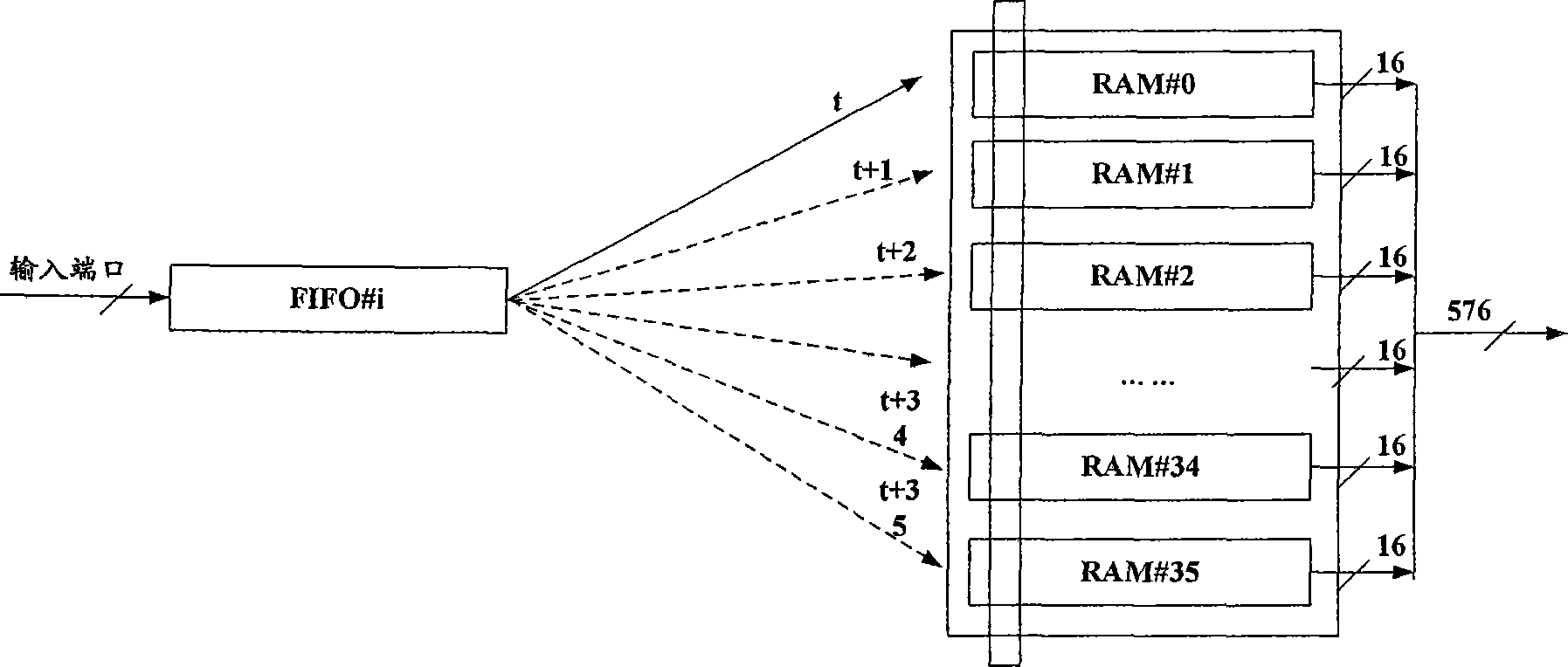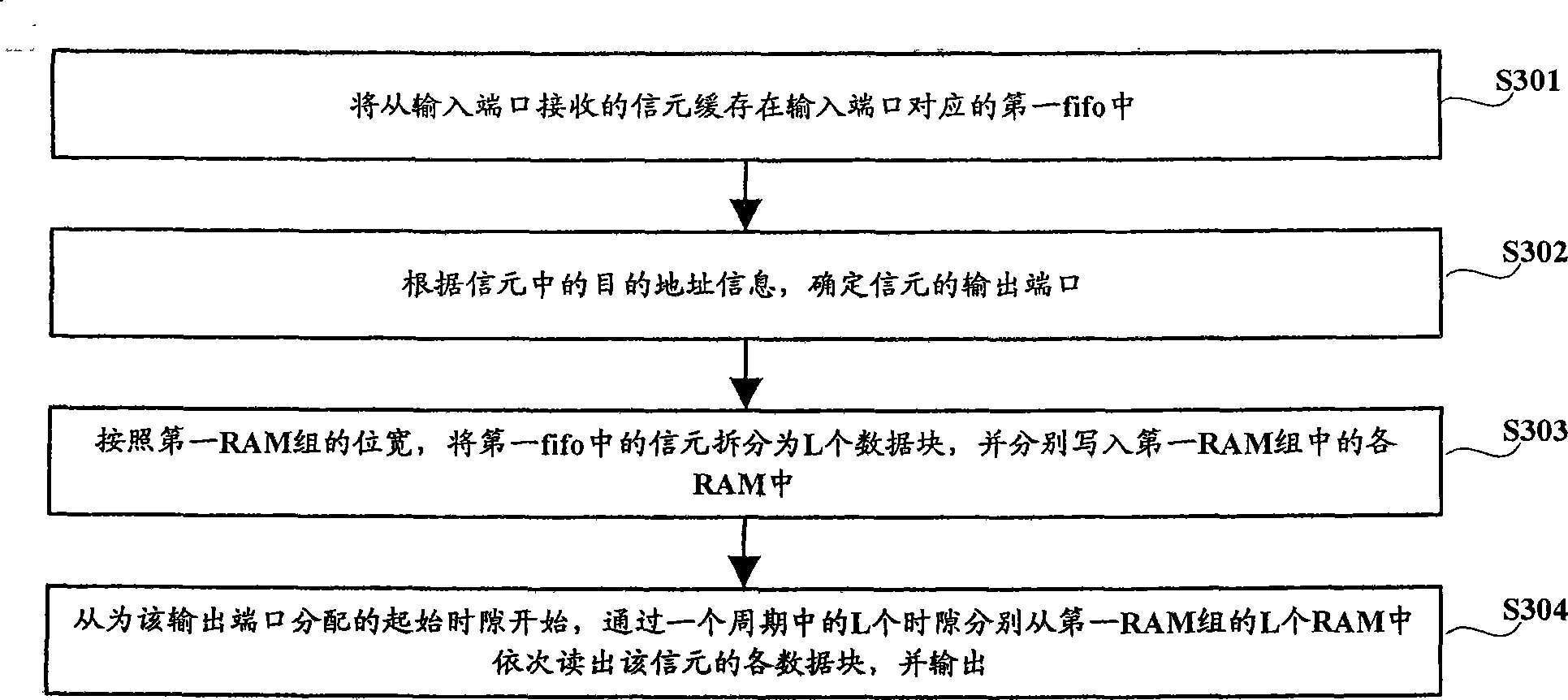Cell switching method and cell switching device
A technology of cell switching and cell, which is applied in the field of data communication, and can solve problems such as increased scheduling complexity, unrealizable number of cross-point buffers, and conflicts
- Summary
- Abstract
- Description
- Claims
- Application Information
AI Technical Summary
Problems solved by technology
Method used
Image
Examples
Embodiment 1
[0125] Only one RAM group is provided in the cell switching device.
[0126] Such as image 3 As shown, the cell switching method provided by the embodiment of the present invention includes:
[0127] Step S301, buffering the cell received from the input port in the first fifo corresponding to the input port;
[0128] Step S302. Determine the output port of the cell according to the destination address information or destination port information in the cell;
[0129] Step S303, according to the bit width of the first RAM group, the cell in the first fifo is split into L data blocks, and respectively written in each RAM in the first RAM group, the first RAM group includes at least L RAM, the bit width of L=cell length / first RAM;
[0130] Step S304, starting from the initial time slot allocated for the output port, through the L time slots in one cycle, read each data block of the cell sequentially from the L RAMs of the first RAM group respectively, and pass the The output ...
Embodiment 2
[0153] Multiple buffers are set in the cell switching device, which is more suitable for the situation where there are many input and output ports.
[0154] At this time, if Figure 5 As shown, the method for cell exchange includes:
[0155] Step S501, buffering the cell received from the input port in the first fifo corresponding to the input port;
[0156] Step S502, according to the bit width of the first RAM group, split the cell in the first fifo into L data blocks, start from the initial time slot allocated for the input port in advance, and pass through L time slots in one cycle Writing L data blocks in turn into the first RAM group corresponding to the group to which the input port belongs, and writing a data block into the corresponding RAM in the first RAM group for each time slot;
[0157] The starting time slots assigned to different input ports are different. In order to ensure that each data block of a cell can be written into the same address of each RAM in th...
PUM
 Login to View More
Login to View More Abstract
Description
Claims
Application Information
 Login to View More
Login to View More - R&D
- Intellectual Property
- Life Sciences
- Materials
- Tech Scout
- Unparalleled Data Quality
- Higher Quality Content
- 60% Fewer Hallucinations
Browse by: Latest US Patents, China's latest patents, Technical Efficacy Thesaurus, Application Domain, Technology Topic, Popular Technical Reports.
© 2025 PatSnap. All rights reserved.Legal|Privacy policy|Modern Slavery Act Transparency Statement|Sitemap|About US| Contact US: help@patsnap.com



